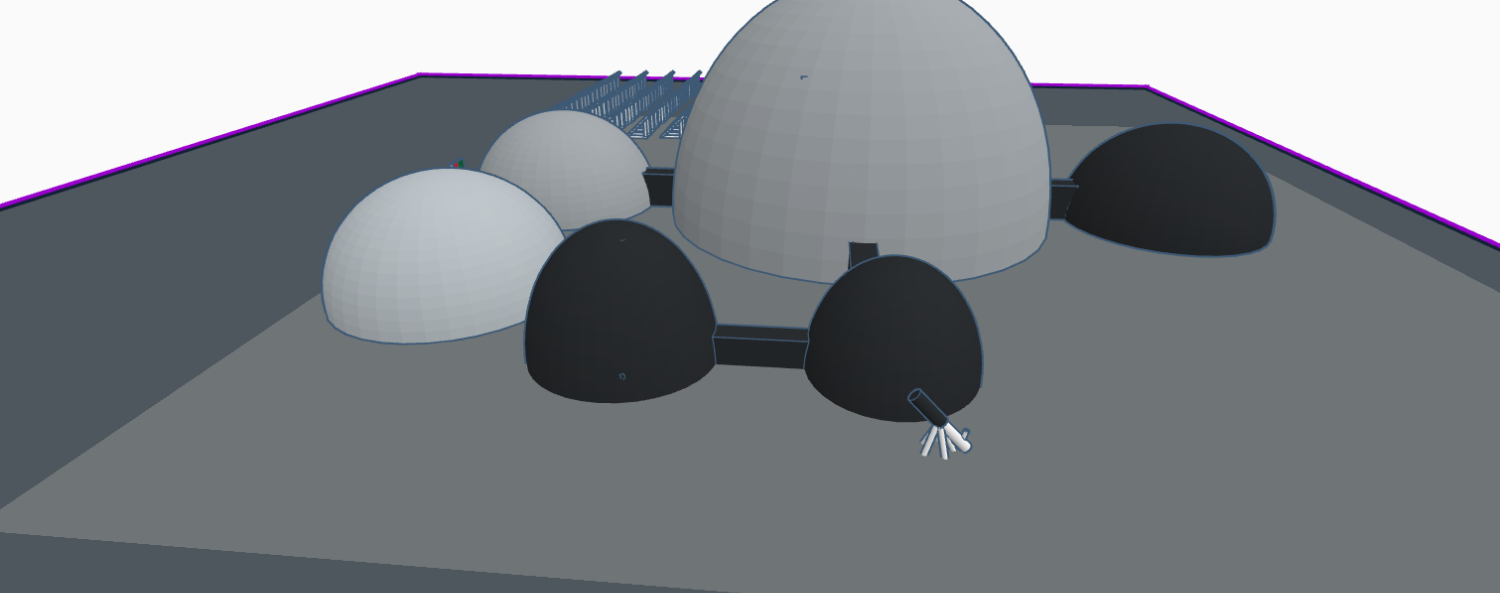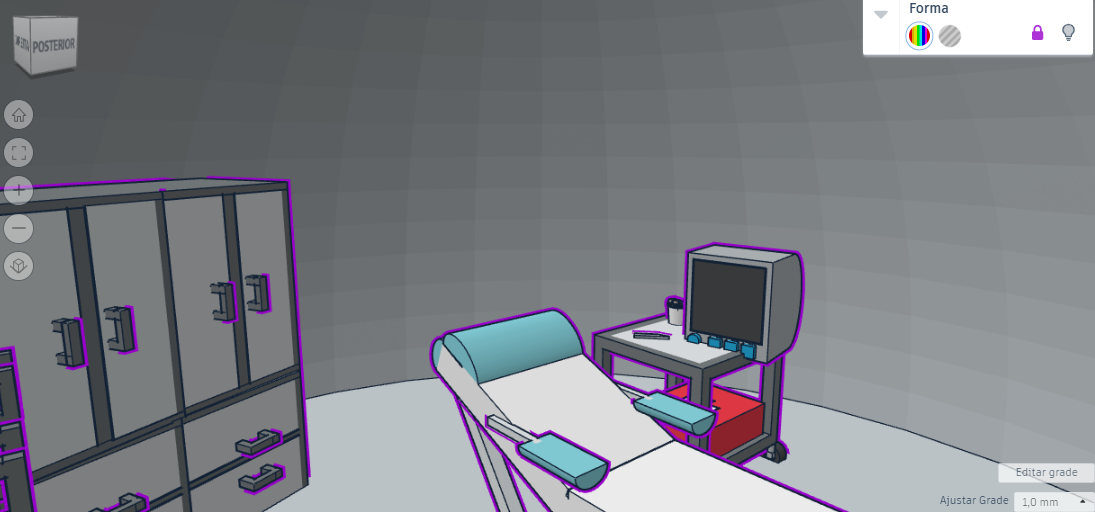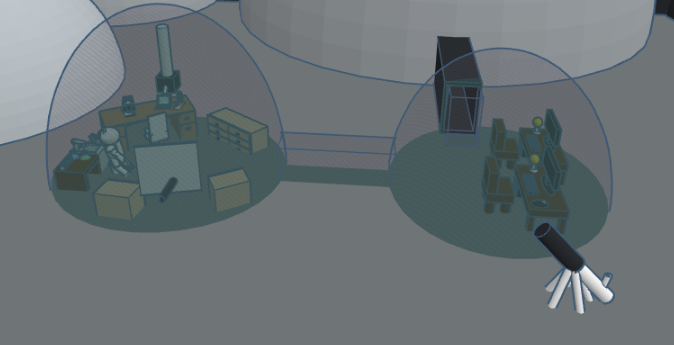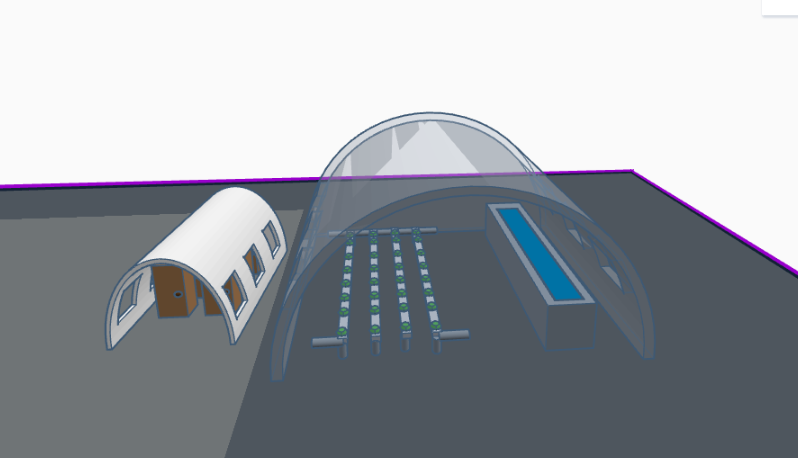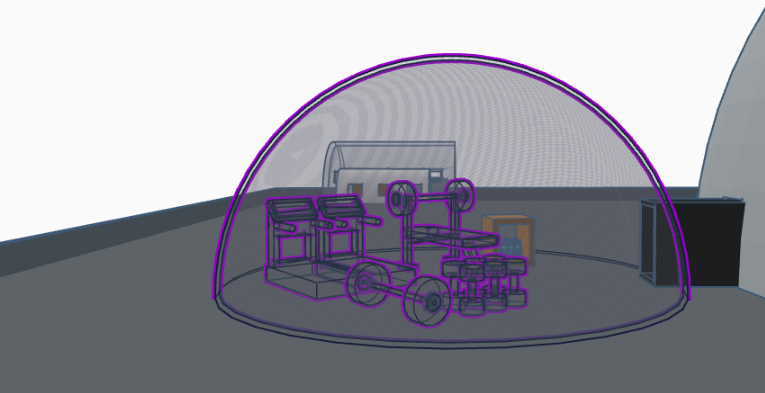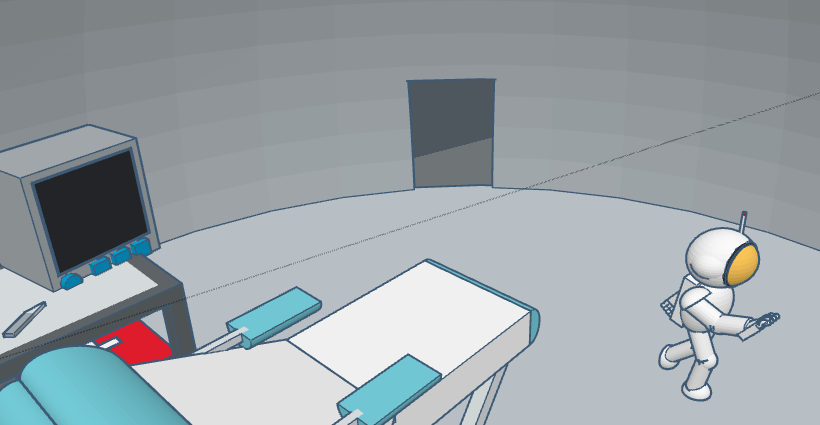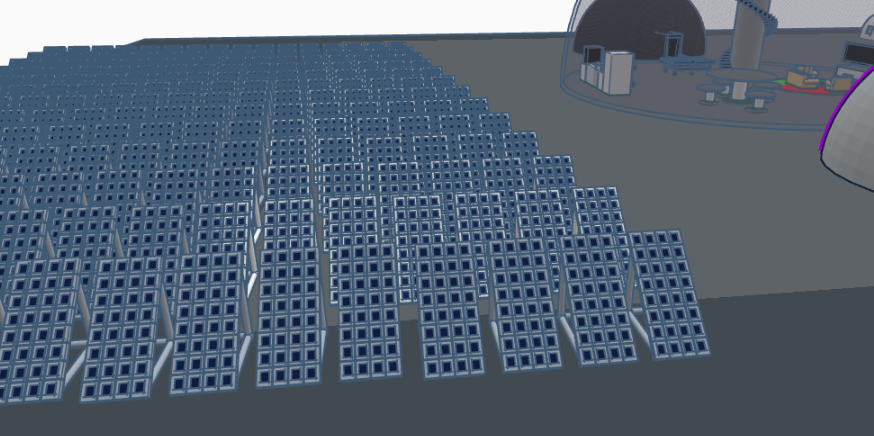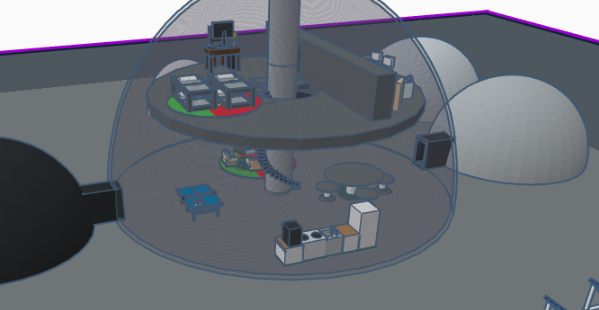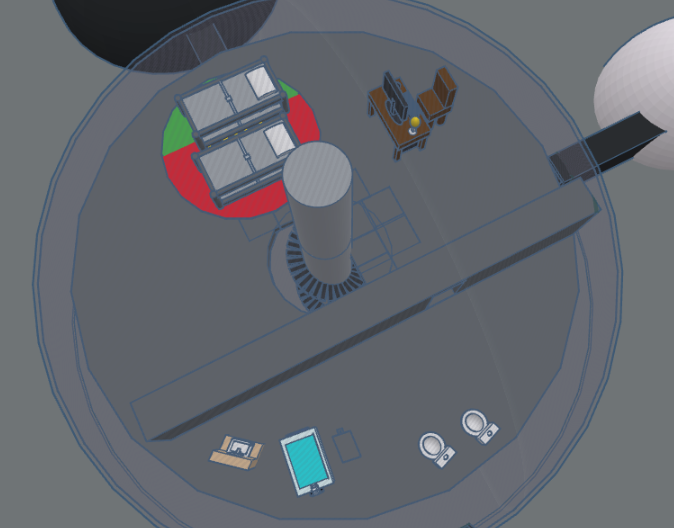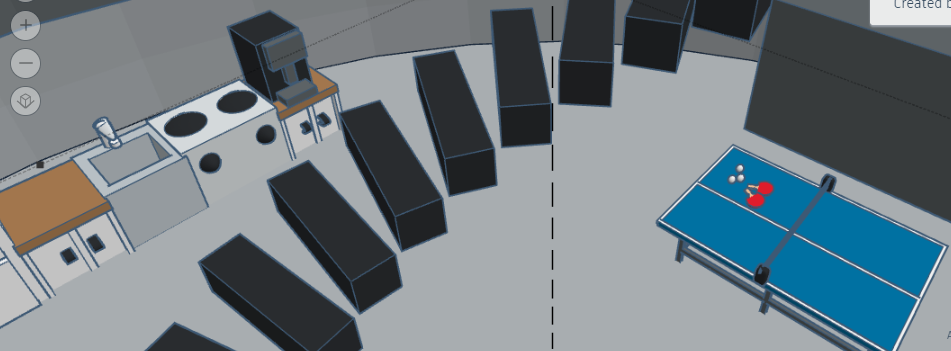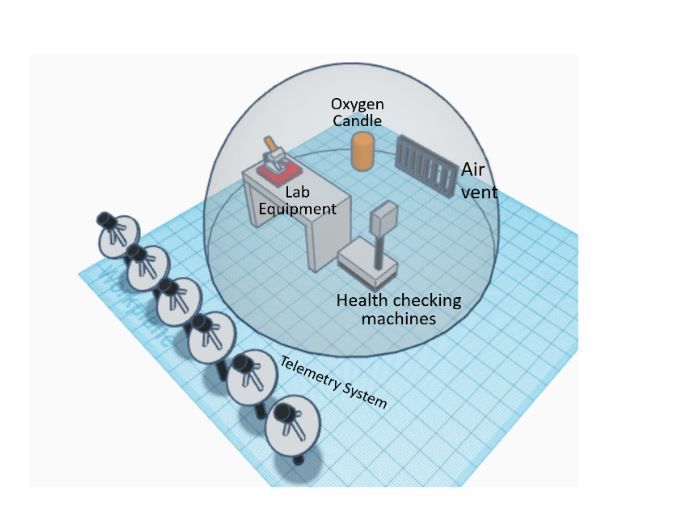Moon Camp Explorers Gallery 2021-2022
In Moon Camp Explorers each team’s mission is to 3D design a complete Moon Camp using Tinkercad. They also have to explain how they will use local resources, protect astronauts from the dangerous of space and describe the living and working facilities.
Team: Acampamento Neil Alden Armstrong
Escola Básica Bernardino Machado Vila Nova de Famalicão Portugal 12, 13 6 / 0
External link for 3d
|
Project description
We intend to build a self-sufficient Lunar base by 2030. During this period we will continue researching and developing technologies based on the new knowledge that the missions to the Moon this year will provide us, namely the missions of the Artemis program. These unmanned missions will take the first steps to create the necessary conditions for our Moon Camp to be able to host humans in a sustainable way. In our “luggage” we carry two major goals. The first is to start a process of “fertilizing” the lunar soil at the site. The second will be to research and observe space, leaving an open door to the knowledge of the Universe. Firstly, we have periodic refueling missions with spacecraft and supported by the future Gateway. Then, we will make our base almost self-sufficient by using lunar resources, recycling and recovering materials. Our base will have five scientists (Geophysicist, Agronomist, Biochemist, Doctor and Astronaut) that will be replaced by other elements every 6 months. Our 3D model has four initial modules: the analysis laboratory and the observatory, the housing, the gym, the greenhouse and nursery. Laboratory module will be capable of testing fuel and fertilizers production technologies based on lunar soil; researching and analyzing the genetic mutations of plants, as well as the health effects these have on the astronauts. Housing module will have the minimum conditions to be inhabited. Gym ensures well-being to better adapt the astronauts to the new conditions, such as microgravity. Greenhouses will use hydroponic technology. |
||||
|
Where do you want to build your Moon Camp?
Shackleton crater Why did you choose this location?
We consider Moon’s South Pole as the best option for the construction of our lunar base because it has an higher incidence of direct solar radiation, lower temperature variations throughout the day and solid water reserves in the Shackleton Crater. On the other hand, this region of the Moon will be the destination of several unmanned missions sent by NASA throughout this year, namely the “Shackleton connection ridge”, which will allow us to better understand the natural resources existing there and improve extraction technologies. How do you plan to build your Mooncamp? Which materials will you use?
The initial base structure will be an inflatable Kevlar dome. The dome is coated with a synthesized composite obtained from lunar soil dust and regolith, which is heated to a temperature close to fusion causing a strong bond with carbon nanoparticles and solidification. This composite will be automated using advanced 3D printing technologies and robotic machines, equipped with photovoltaic panels, which sequentially deposit the composite on the dome. Finally, it will be coated with Captom, a very resistant plastic material which was first used on the James Webb Telescope (JWT). |
||||
|
Water
|
Food
|
Electricity
|
Air
|
Protection
|
|
At first, the water needed for consumption will be taken from Earth. As soon as it’s possible to store water, the astronauts will use excavators to extract ice blocks from the bottom of the craters, taking them to storage tanks. These will be equipped with a reflecting mirror system that will concentrate the radiation to obtain liquid water. Then, the water will be purified and mineralized through physical and chemical processes. We will have an advanced water recycling process that will not allow wasting. We will have enough water to consume, water the plants and to prepare hydroponic solutions. |
Food for the first few days will only come from Earth. During the stay, dehydrated products will be sent, such as fruits, fish, meat and energetic drinks. As soon as possible, meals will be enriched with fresh vegetables sown and harvested in our hydroponic greenhouse. In order to increase productivity, using the remaining greenhouses for studies of different substrates based on composting records and materials obtained from composting in the space of organic materials and urine. |
The main energy source will be photovoltaic solar panels, which will be taken from Earth. While there is sunlight, we will produce hydrogen and oxygen through water electrolysis. The hydrogen will be stored so that it can be used during the night to produce electricity, using hydrogen fuel cells. The oxygen extracted from lunar soil by electrolysis will also be used as fuel in future spaceship missions. When the initial energetic problem gets solved and the lunar camp starts working, we want to initiate a fusion power plant of helium-3 to produce electricity. |
Nitrogen will be taken from the Earth. |
Spaceships and astronaut suits will be lined with materials based on carbon nanotubes. The domes of our base will have an aluminum-based heat shield that will be taken from Earth in order to reflect the most energetic radiation. |
|
Describe a day on the Moon for one of your Moon Camp astronauts
Routine of the Space Agronomist 7:30h Get up, then personal hygiene; 8:00 am Breakfast with bread, energy drink and vegetables, shared in a group; 8:30 am – Morning walk of relaxation, through the greenhouses; 9:00-11:00h – Monitoring of greenhouses, verification and control of the temperature and irrigation system and manual pollination. Then, observation of plant development, collection of samples for analysis. Finally, harvest lettuce and carrots for lunch; 11:00 -12:00h – Fill the water tank. With the excavator collects ice from the crater. Chew a capsaicin-based lozenge (found in pepper -Capsaicin) to recover flavor. 12:00 – 13:30 – Lunch in group. Heat the water in the solar oven to rehydrate the pasta and increase the nutritional power of your meal with a fresh vegetable salad. 13:30h – 15:30h -Analysis and interpretation of data from the collected samples. 15:30h–16:30h – Practice of physical exercise; 16:30h – 18:00h – Sow peas and beets in the hydroponic greenhouse. Then he collects dead leaves and other biodegradable materials. Verification and control of the composting system and collection of samples for future analysis. 18:00h –19:30h – Practice of different modalities of physical exercise; 19:30h – 20:30h – Collaboration in preparing dinner, dinner and tidying up the space. 20:30h –22:00h Conviviality, relaxation activities and board games. Moment of sharing emotions, revealing the successes and frustrations of the day by the entire crew, when necessary, individualized psychological support, with the specialist (Doctor); 22:00 Observation of the to-do list for the next day. Personal hygiene, preparation to rest, until another day. |
||||


